Desk legs are the foundation of both the aesthetics and functionality of your workspace. Whether you're giving a facelift to an old favourite or creating a custom piece, building your own desk legs is a valuable, fulfilling project.
Below, we'll guide you through how to build desk legs and spark your creativity with design ideas. You’ll feel confident in your next steps by the time you finish reading!
That being said, we also recognise that DIY isn't for everyone. If you find the task daunting or too time-consuming, The Hairpin Leg Co. offers a stunning array of expertly crafted desk legs to complete your project with style and ease.
Explore our styles today for inspiration or to save yourself time and trouble of DIY!
The Role of Legs in Desk Aesthetics and Functionality
Desk legs play a key role in defining the character and usability of your workspace. A well-chosen set of legs can elevate a mundane desk into a centrepiece of your office or study, infusing modernity or classic charm into the room's decor.
Beyond aesthetics, the functionality of desk legs plays a pivotal part as well. The right legs can enhance comfort, providing ample space for legroom and chair accommodation, and ensure stability to prevent wobbles that can disrupt your work.
Your choice of material also impacts longevity. Durable materials like steel can bear heavy loads and withstand the test of time, while certain woods offer a balance of strength and a touch of organic warmth to your workspace.
All things considered, the usability and appearance of your legs is not something you should take lightly! So, if you don’t want to take any chances, stick with our selection at The Hairpin Leg Co. Otherwise, we’ll walk you through how to build desk legs below.
How to Build Desk Legs: Step-by-Step Guide
Ready to learn how to build legs for a desk? This is a practical, creative endeavour that we’re excited to help you prepare for. First things first - let’s talk materials.
Gathering Your Materials and Tools
Start by getting all the materials and tools you need on hand. These will include:
- Wood or metal, depending on your design preference (we’ll offer design inspiration after we walk you through the general steps)
- Saw for cutting (hand saw, jigsaw, circular saw, or mitre saw for wood; hacksaw or angle grinder for metal)
- Measuring tape
- Pencil or marker for marking cuts
- Square or mitre guide to ensure perfect angles
- Drill with bits appropriate for your material
- Screws or bolts, depending on the joinery method
- Sandpaper or a power sander
- Wood glue (if working with wood)
- Finish (paint, stain, or sealant)
- Safety gear (gloves, goggles, and ear protection)
One of the most common questions we see asked about how to build desk legs is whether you should go with wooden furniture legs or metal. We recommend beginners work with wood as it's more forgiving and easier to manipulate than metal.
Softwoods like pine are affordable and easier to cut and drill into, making them ideal for those just starting out. Hardwoods like oak or maple provide durability and a more refined finish if you're looking to create something that will endure heavy use.
If you have access to the right tools and have some metal working experience, though, you can create some really unique modern and industrial designs.
Measuring and Cutting
Precision is crucial when measuring and cutting your materials. Part of what may have drawn you to the idea of DIY is the cost-saving aspect - but if you have to go back for more materials due to miscalculations, you may end up spending more in the long run!
So, decide on the height of your desk first. How tall are desk legs? Because you’re making your own set of legs, it’s entirely up to you! They’re typically around 71cm for a comfortable sitting desk. Be sure to account for the thickness of your desktop in the total height.
Mark your material using a pencil or marker and a square to ensure straight lines. Measure twice to avoid mistakes. Then, using your chosen saw, cut along the marked lines. Keep your cuts as straight and clean as possible to avoid extra sanding later.
Assembly and Joinery Techniques
The strength of your desk lies in the joinery, which is where you’ll attach the legs. Here are some common techniques:
- Dowel Joinery: Drill aligned holes in both the legs and the desk underside and connect them with wooden dowels and glue.
- Pocket Hole Joinery: Use a pocket hole jig to create angled holes for screws that will join the legs to the desktop.
- Bracket Joinery: Attach metal brackets to the top of each leg, then screw the bracket to the desktop for a simple and strong join.
The best approach depends on the tools you have available and your skill level. For beginners, bracket joinery is straightforward and doesn't require specialised tools.
However, if you’re looking for a cleaner look and are willing to invest a bit more time and effort, dowel joinery is an excellent choice, as it hides the connection points and offers a strong bond when done correctly.
Pocket hole joinery is a middle ground, offering a robust joint with a bit more finesse than brackets but less work than dowels.
Sanding and Coating
Sand down all surfaces to remove any splinters or rough areas, starting with a coarse grit and moving to a finer grit for a smooth finish.
Once you're satisfied with the smoothness of the legs, wipe down the legs to remove any dust. If you're working with metal, clean the surface with a damp cloth and let it dry.
Apply your chosen finish to protect the wood and enhance its appearance. For a natural look, use a clear varnish or oil. If you prefer a pop of colour, go for paint. Apply at least two coats, sanding lightly between layers for a professional finish.
For metal furniture legs, consider a rust-inhibitor primer followed by a metal-grade paint. Whichever approach you take, allow ample time for the finish to dry before attaching the legs to your desktop. This will ensure a long-lasting and durable set of desk legs that you can be proud of.
When the time comes, you can learn how to attach table legs in our blog. The steps are quite similar for attaching DIY desk legs.
DIY Desk Leg Designs to Consider
There you have it, how to build desk legs! If you don’t know where to start, though, we’ll share some of our favourite designs below. Many of these are available right here at The Hairpin Leg Co., too, so you can get a better look at them before getting started!
Classic Designs That Never Go Out of Style
Tapered legs not only add a touch of elegance but also create an illusion of space, making them ideal for smaller rooms. The gentle narrowing of the legs draws the eye, giving a light and airy feel to the piece.
For desks with a more stately and ornate appearance, turned legs can transform the ordinary into the extraordinary. Each leg becomes a work of art, showcasing intricate details and craftsmanship that can reflect personal style or echo design elements from the period furniture that inspires you.
Modern and Contemporary Leg Styles
If you want something more modern, you can’t go wrong with hairpin legs. Wait - what are hairpin legs? We consider them to be the best table leg design, as our name suggests!
These sleek and minimalistic legs are made from bent metal rods that resemble hairpins. They're perfect for a mid-century modern aesthetic and are incredibly easy to install. We actually have a guide on how to make hairpin legs without welding, too.
For an industrial look, use metal pipes and fittings to construct your legs. This design is not only trendy but also offers the opportunity to incorporate shelves or storage within the leg structure.
Customisation and Personal Touches
Part of the fun of learning how to build legs for a desk is that you can put your own personal spin on the design, enhancing its functionality, aesthetics, or both!
If you want a versatile desk, consider creating adjustable legs. You can use metal or wooden legs with adjustable feet to ensure your desk is level on uneven floors.
You could also build box-shaped legs with added shelves or drawers for a desk that's both stylish and practical. Don't limit yourself to wood or metal, either. You can get creative with materials like acrylic for a modern twist or repurposed items like vintage table legs for a unique touch.
Should You Build Your Own Desk Legs or Buy a Professionally Crafted Set?
Now, before you run out to grab tools and get to work we want to help you set your expectations.
Even with our expert tips on how to build desk legs, this project can be time-consuming, convoluted, and difficult for those lacking woodworking or metalworking skills.
So, let’s go over the pros and cons below to help you determine if it’s worth the work!
Benefits of DIY Desk Legs
Crafting your own desk legs allows you to tailor every aspect to your specific needs and style preferences. From the height and width to the material and finish, the customisation possibilities are endless.
As we said earlier, making your own desk legs is generally more cost-effective than buying pre-made ones, especially if you already have the necessary tools and only need to purchase materials.
There’s also the idea of learning new skills or honing in existing ones. Each project can help you become more proficient and confident in your abilities.
But one of the most overlooked benefits of building desk legs is the sense of fulfillment it offers. There's a unique sense of accomplishment that comes from creating something with your own hands. This emotional value can't be bought and can make your desk feel even more special.
That being said, it’s also important that you weigh the other side of the process…
Challenges and Drawbacks to Consider
Although this was a fairly succinct guide, crafting desk legs is not a quick process. It requires a significant time investment, from planning and sourcing materials to the actual building and finishing.
You'll also need access to certain tools, and for some designs, a level of skill that might be beyond a beginner's capabilities. This could mean a steeper learning curve and the potential for mistakes.
It’s also worth noting that you could put in a ton of work and invest a solid chunk of change only to be disappointed in the final product.
The truth is that professional craftsmen have years of experience and access to high-quality materials and tools, ensuring a consistent and durable product. DIY projects can sometimes result in less uniformity and potential quality issues if not done correctly.
While a self-made desk can be a conversation starter and a point of pride, it may not hold the same resale value as a professionally made piece, should you ever decide to sell it. So you’ll also need to think about the long-term value of your desk before getting started.
All things considered, the vast majority of individuals are better off buying professional legs from a company like The Hairpin Leg Co. We’ll explain why below…
Save Time and Ensure a Beautiful, Functional Desk at The Hairpin Leg Co.!
If you want to create a stunning desk that is also sturdy and reliable, look no further than our furniture legs. We offer unparalleled quality, a diverse range of designs, and world-class customer support every step of the way.
Modelled after Henry Glass's iconic 1940s design, our hairpin legs range includes both twin and triple rod styles, perfect for projects from petite dressers to robust bars. With finishes from sleek powder-coated paints to real metal brass, copper, or chrome, our hairpin legs are as versatile as they are durable.
For those with industrial tastes, our trapezium industrial legs blend modern CNC precision with traditional craftsmanship. These heavy-duty supports are designed to handle the heaviest of projects, available in various professional finishes or raw steel for a custom touch.
But if you’re looking for something more timeless and natural, look no further than our wooden legs. These are carefully crafted from high-quality oak and are sure to breathe fresh life into your office or game room.
These are just a few of the styles awaiting you in our catalogue. We're so confident in our products that we offer a happiness guarantee. If you're not satisfied, return your purchase within 60 days for a full refund, no questions asked.
So, what are you waiting for? Discover the perfect blend of style, support, and value for your next project with us as we wrap up our guide on how to build desk legs.
Final Thoughts on How to Build Legs for a Desk
When building desk legs, remember the key to a successful project lies in choosing the right materials and designs that align with both your aesthetic and functional needs. Always measure twice, cut once. And when in doubt, trust the expertly crafted products here at The Hairpin Leg Co.
Whether you opt for DIY or a professional set, you’re still creating a piece of furniture that's truly your own. Why work harder than you have to in bringing your dream desk to life?
From the best metal table legs or wooden legs, our selection is ready to attach to your desktop today. Shop now and find out firsthand why we’ve been the #1 choice among DIYers since 2013!

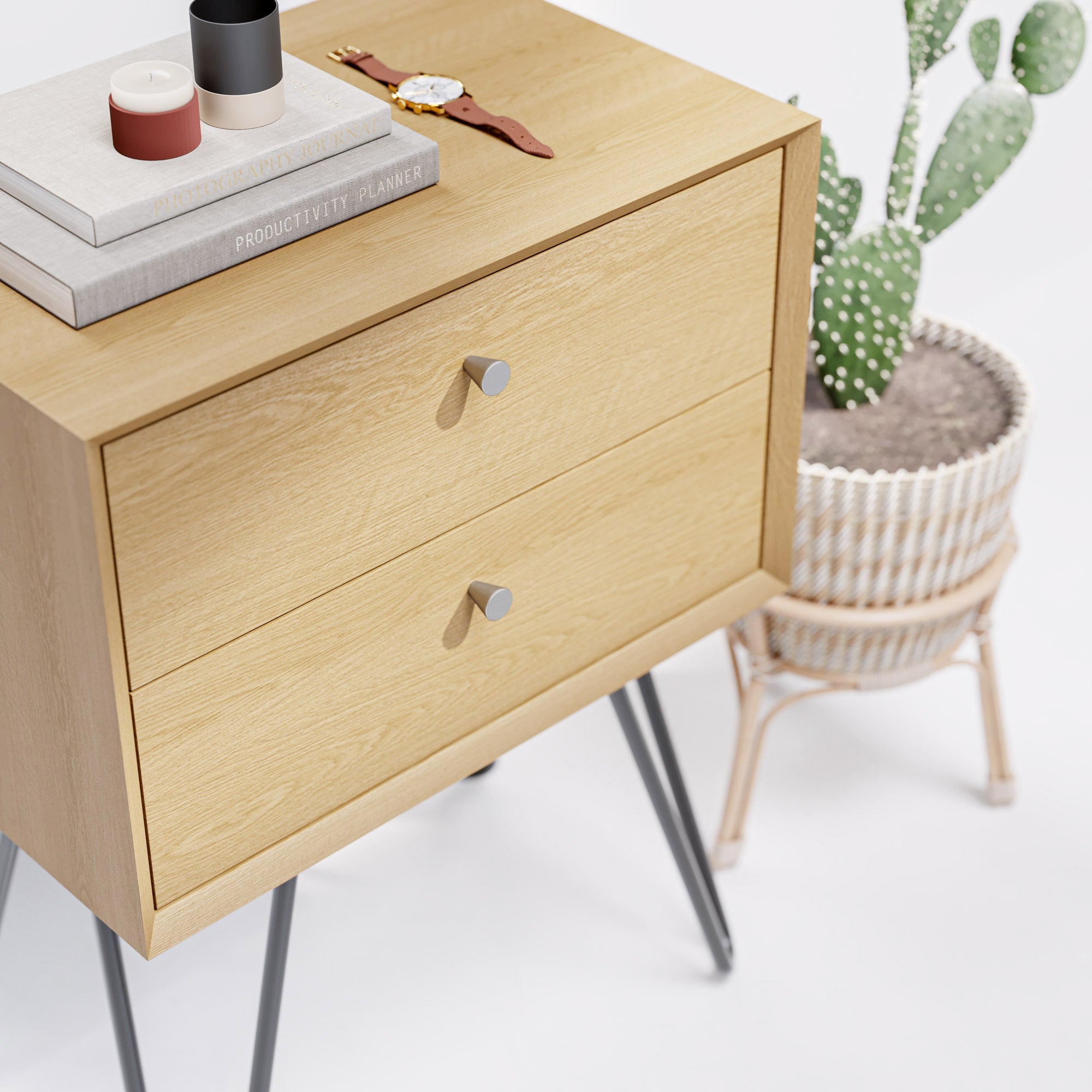
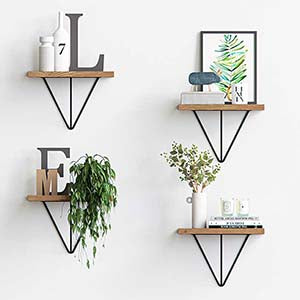
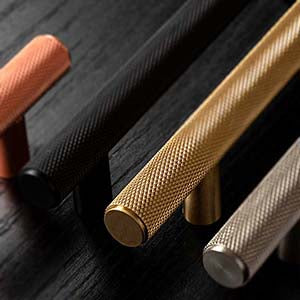
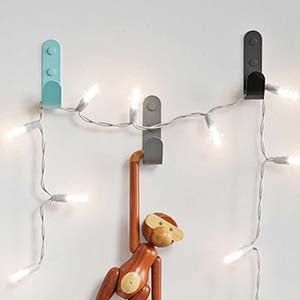
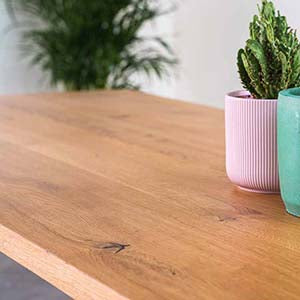
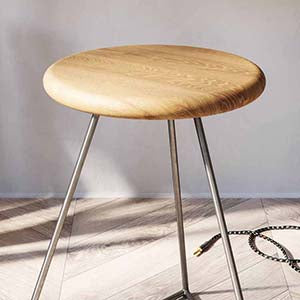
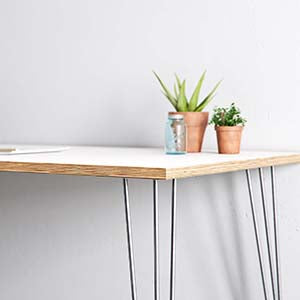
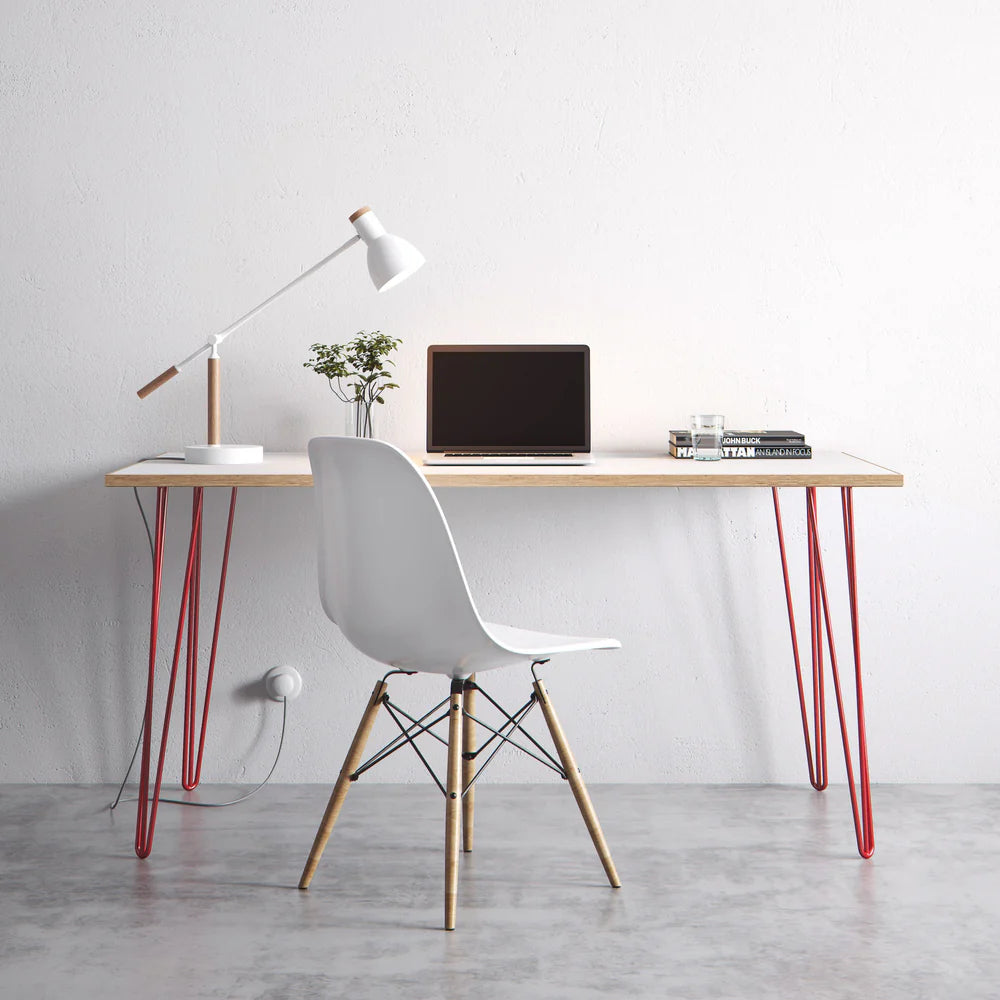
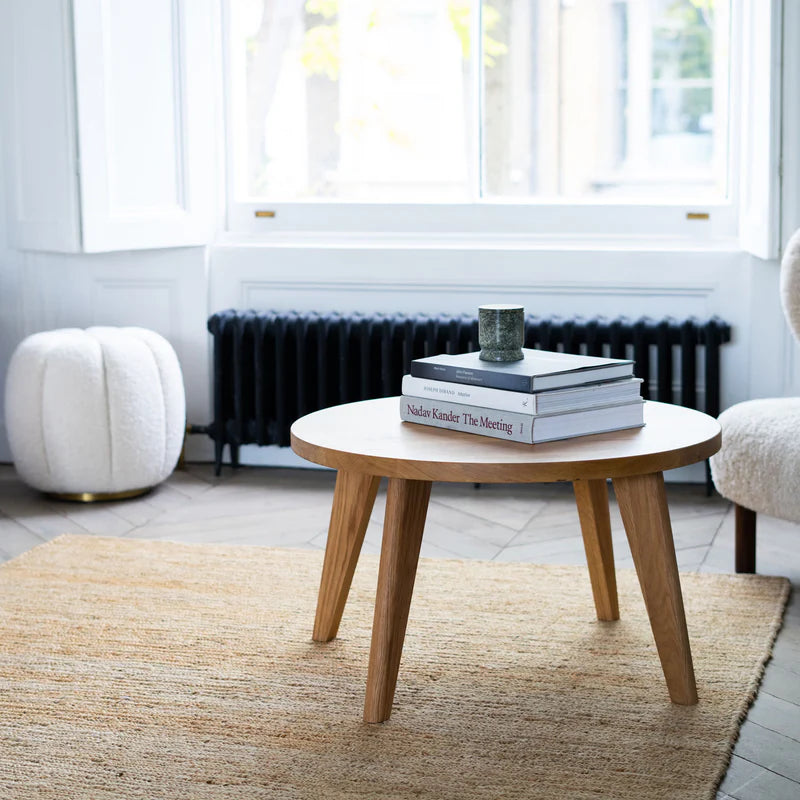
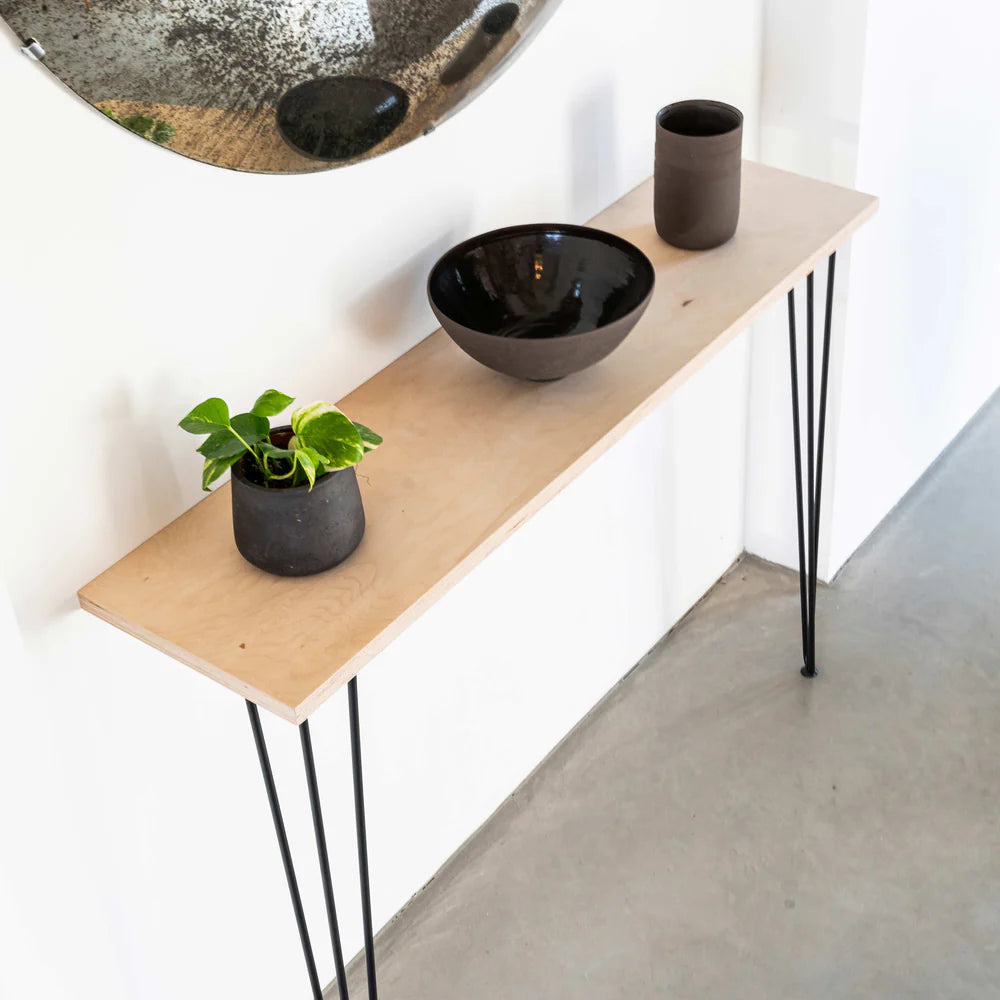
Leave a comment
This site is protected by hCaptcha and the hCaptcha Privacy Policy and Terms of Service apply.